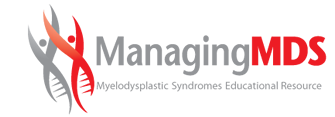Hello, my name is Guillermo Garcia-Manero. I'm a Leukemia Attending Physician at the University of Texas MD Anderson Cancer Center. Today, we're going to be briefly revealing a new compound for patients with MDS known as ASTX727 that was just approved by the US FDA a few weeks ago with an initial publication in the journal Blood this past week. I was asked a number of practical questions about this agent. The first one is, what is the potential role of ASTX727 in the current treatment algorithm for patients with MDS? This compound, ASTX727, is an oral form of decitabine. It combines another drug called cedazuridine that is an inhibitor of cytidine deaminase rendering the combination basically identical in terms of pharmacological profile to that of IV decitabine, so the role of this agent in the algorithm of MDS will be identical to that of decitabine. For those physicians that use IV decitabine, that would be basically an oral form of this compound. Therefore, the patients that are eligible are those for whom this drug, IV decitabine, is approved. Basically, patients with MDS, at least with intermediate-1 disease with the original label of decitabine in the United States. The drug will be, of course, an oral drug. You will follow the schedule of IV decitabine that will be a five-day schedule, but there is no reason why this drug could not be used on a 10-day schedule if that's what you use in some of your patients with myelodysplastic syndrome.
In terms of the toxicity of this compound, it will be similar or identical to that of IV decitabine, mainly myelosuppression, so we need to take all the precautions that we use with this hypomethylating agent, meaning transfusion support, prophylactic antibiotics, and basically identical to what the experience has been in the past with IV decitabine. Interestingly, we have not seen an excess GI toxicity with this compound, so that should be well tolerated from that context. In summary, ASTX727 is an oral hypomethylating agent. Indeed, actually it is the first drug approved as an oral hypomethylating agent. It should follow the label of IV decitabine and it should have similar toxicity profile to that of IV decitabine, a drug that we have now experienced for close to 15 years. Of course, the final two questions are the full detail in terms of the clinical activity of this compound. This is going to be updated at ASH, we hope this year, but the printed data that we have seen and we have reported at the prior ASH meeting is identical if not better to that of IV decitabine and, of course, this drug is not in the pharmacies yet. We still need to understand the cost to our patients of this particular agent. Thank you very much for your attention.

